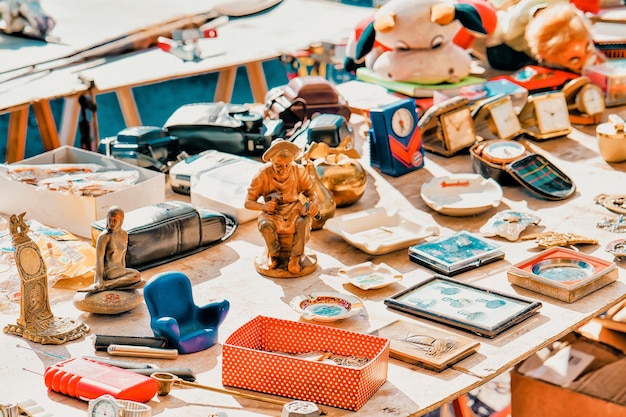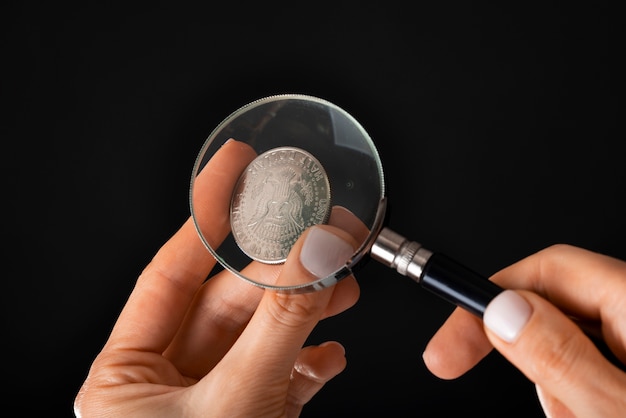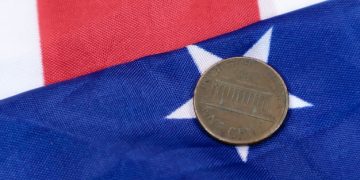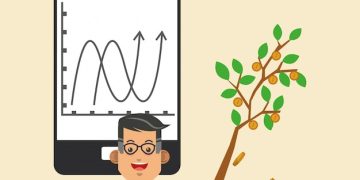Investing in Collectibles: Turn Passion into Profit

Investing in collectibles involves turning your passion for unique items into potential profit by carefully researching, acquiring, and eventually selling them at a higher value.
Do you have a passion for art, vintage cars, or rare books? What if you could turn that enthusiasm into a profitable venture? Investing in collectibles might be the perfect avenue for you, blending the joy of collecting with the potential for financial gain.
Understanding the Allure of Collectible Investing
The world of collectibles is vast and varied, offering something for almost every interest. But what exactly makes certain items “collectible” and why are people willing to invest significant amounts of money in them?
Collectible investing is about more than just acquiring pretty objects. It’s about understanding the market, predicting future trends, and recognizing the intrinsic value that others might overlook. Let’s delve into the core aspects of this unique investment strategy.
What Defines a Collectible?
A collectible is generally defined as an item that is valued and sought after by collectors, often due to its rarity, historical significance, aesthetic appeal, or association with a particular person or event.
The Psychology Behind Collecting
Collecting is driven by a range of motivations, from nostalgia and personal connection to the thrill of the hunt and the satisfaction of owning something unique. Understanding these psychological factors is crucial for anyone looking to invest successfully in collectibles.

Exploring Different Types of Collectibles
The possibilities are endless when it comes to collectibles. From fine art to sports memorabilia, there’s a niche for every enthusiast and investor. Here’s a look at some of the most popular and potentially profitable categories.
Each type of collectible has its own unique characteristics, market dynamics, and investment considerations. Let’s explore a variety of options to get a sense of the possibilities.
- Fine Art: Paintings, sculptures, and limited-edition prints by renowned artists.
- Rare Books and Manuscripts: First editions, signed copies, and historical documents.
- Vintage Cars: Classic automobiles with historical significance and iconic designs.
- Sports Memorabilia: Signed jerseys, game-used equipment, and trading cards of famous athletes.
These examples represent only a small fraction of the collectibles market and understanding these different categories can significantly improve success when Investing in Collectibles!
Assessing the Value of Collectibles
Determining the true value of a collectible is a complex process that requires careful research, market knowledge, and keen observation. Several factors can influence an item’s worth, and it’s important to understand these dynamics before making any investment decisions.
Valuation is not an exact science. The following methods can help any passionate investor.
Rarity and Condition
Rarity is often the most important factor in determining a collectible’s value. Items that are scarce or difficult to find are generally more valuable. Condition also plays a crucial role. A pristine, well-preserved item will typically command a higher price than one that is damaged or poorly maintained.
Provenance and Authenticity
The provenance, or history of ownership, of a collectible can significantly impact its value. Items with a documented history of ownership by notable individuals or institutions are often highly sought after. Authenticity is also paramount. Collectors want to be certain that the item they are purchasing is genuine and not a forgery or reproduction.
Strategies for Investing in Collectibles
Investing in collectibles requires a different approach than traditional investments like stocks or bonds. Here are some key strategies to help you navigate the market and make informed decisions.
The process goes far beyond just buying what you like. Patience and research are key!
- Research the Market: Stay up-to-date on market trends, price fluctuations, and emerging collectibles categories.
- Diversify Your Portfolio: Don’t put all your eggs in one basket. Spread your investment across different types of collectibles to mitigate risk.
- Establish a Budget: Determine how much you are willing to invest and stick to your budget.
- Seek Expert Advice: Consult with experienced collectors, appraisers, or dealers for guidance and insights.

Avoiding Common Pitfalls in Collectible Investing
The collectibles market can be risky if you’re not careful. Here are some common mistakes to avoid when investing in collectibles.
Understanding the issues can save a substantial amount of resources, especially in the long run.
Overpaying for Items
It’s easy to get caught up in the excitement of an auction or private sale and overpay for a collectible. Always do your research and know the fair market value of an item before making a bid or offer.
Falling for Forgeries
The market is rife with fakes and reproductions. Always authenticate your purchases through reputable experts or authentication services.
Neglecting Storage and Preservation
Improper storage and handling can damage collectibles and diminish their value. Invest in appropriate storage solutions and follow best practices for preserving your valuable items.
The Future of Collectible Investing
The world of collectibles is constantly evolving, driven by changing tastes, technological advancements, and global economic trends. What does the future hold for collectible investing?
Changes happen quickly, therefore adapting to trends and shifts is important too.
The Rise of Digital Collectibles
Non-fungible tokens (NFTs) and other digital collectibles are gaining traction in the market, opening up new opportunities for investors. While the market is still relatively new and volatile, digital collectibles have the potential to disrupt traditional collecting models.
The Growing Interest in Sustainable and Ethical Investing
As consumers become more conscious of the environmental and social impact of their purchases, sustainable and ethically sourced collectibles are gaining popularity. Investors who prioritize these values may find opportunities in this emerging trend.
Investing in Collectibles can be an exciting and rewarding endeavor, blending passion with profitability. By understanding the market, assessing value, employing smart strategies, avoiding common pitfalls, and staying attuned to future trends, you can turn your love for unique items into a successful investment portfolio.
| Key Point | Brief Description |
|---|---|
| 🔍 Understanding Collectibles | Learn what makes an item collectible and the motivations behind collecting. |
| 💰 Assessing Value | Evaluate rarity, condition, and provenance to determine an item’s worth. |
| 🛡️ Avoiding Pitfalls | Avoid overpaying, forgeries, and neglect storage. |
| 📈 Future Trends | Consider digital collectibles and sustainable collecting. |
Frequently Asked Questions
▼
Unlike stocks or bonds, collectible investing depends on the intrinsic value and market demand for unique items, driven by passion and scarcity rather than company performance.
▼
Engage with reputable appraisers or authentication services specializing in the type of collectible you’re interested in to verify its genuineness.
▼
Risks include market fluctuations, the potential for fraud, and the cost of proper storage and insurance. Thorough research is crucial to mitigate these risks.
▼
Proper storage depends on the item; consider climate-controlled environments for sensitive materials and insurance against damage or theft.
▼
Ideally, invest in what you love because passion fuels your research, but balance personal interest with market trends for potential profitability.
Conclusion
From understanding the allure of collectibles and exploring the various types, to assessing value and employing smart investment strategies, the collectibles market is potentially very interesting. By diversifying portfolios and carefully researching, Investing in Collectibles can be an exciting experience.





